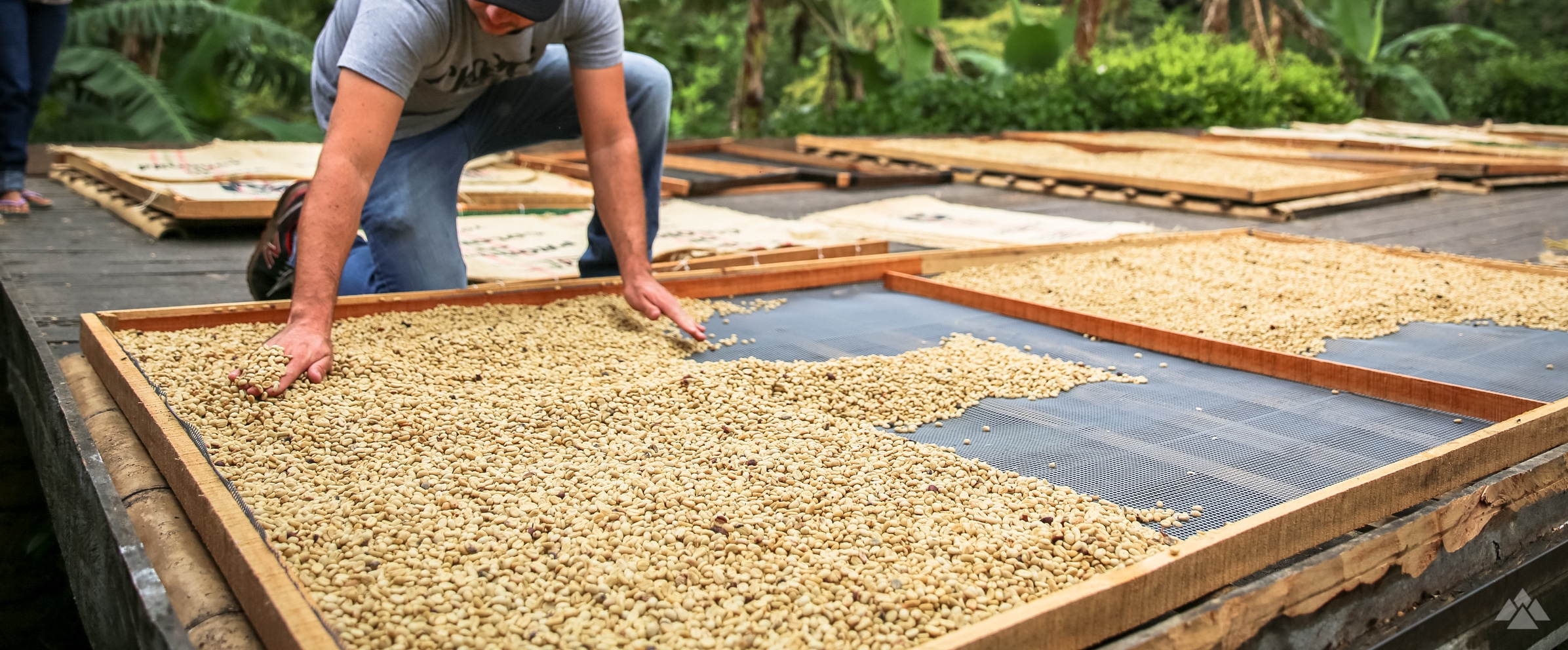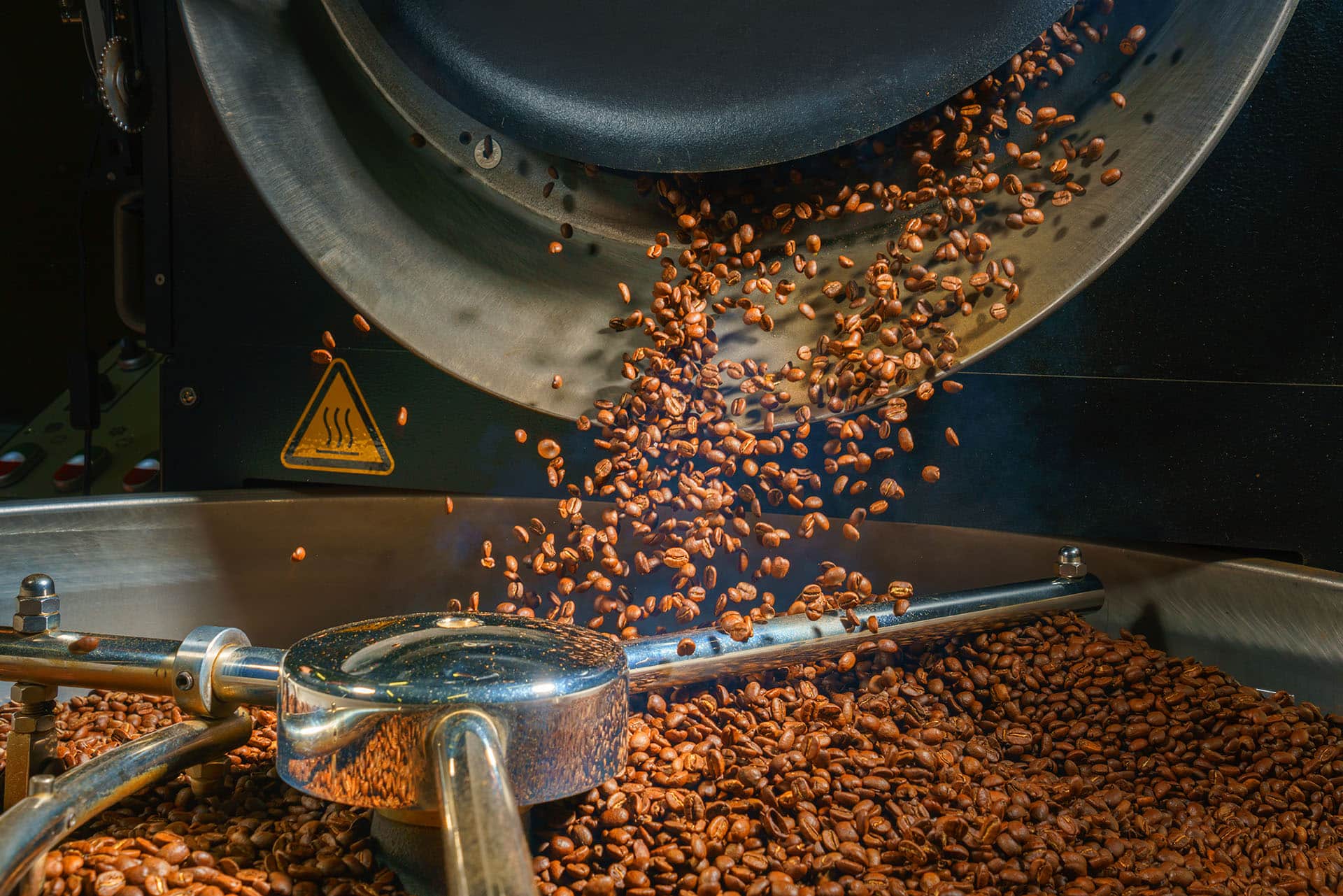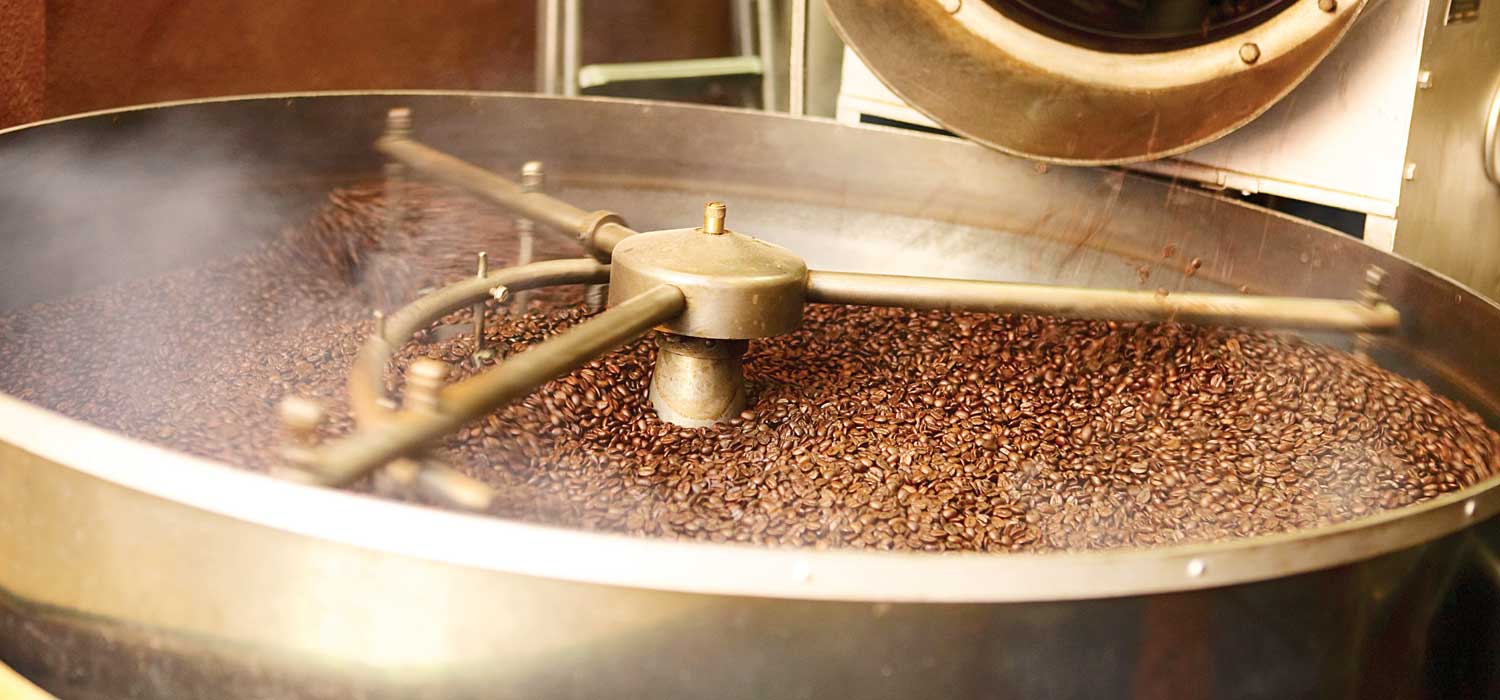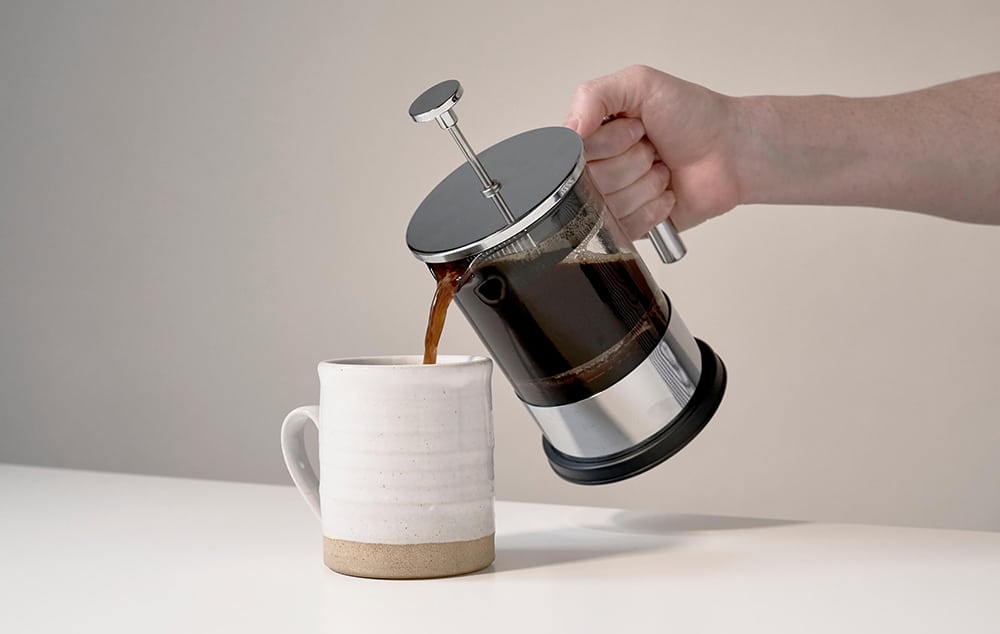

For many folks, coffee is an essential part of daily living. It is nearly impossible for them to imagine starting the day without a cup of coffee in their hands. And in the afternoon, when afternoon slump strikes, coffee serves as a way to chase the fatigue away. Have you ever wondered how coffee is made? Well, this article offers an in-depth analysis of what goes into producing coffee, from the seed to your cup.
Before coffee arrives in your cup, it undergoes a series of processes. It involves drying and husking the coffee cherries, cleaning the beans, roasting, and brewing. The processes the coffee goes through play a large part in the way the coffee tastes in your cup. Now, let us consider what coffee is, the processes it goes through to get into your cup, the types of coffee drinks, and the environmental effects.
As a coffee lover, have you ever wondered where coffee is from? When asked, many folks assume that coffee comes from a plant, and they imagine the coffee beans grow from a plant and are plucked as you would apples. However, only a few realize that coffee doesn’t come or start in the form of a bean at all.
The coffee bean is, in reality, a seed from a unique type of berries. Therefore, it is correct to say that coffee beans come from a fruit.
The berries the beans come from are often split in two. In rarer cases, the berries do not split; instead appears whole. It thus contains a coffee bean that has not broken. This type of coffee bean is called Peaberry because the shape resembles that of a pea.
There are different types of coffee beans around the world. However, two of these are the most common types on the market. They are the Arabica and Robusta.

Arabica coffee is not easy to grow. It requires specific conditions to be grown successfully. It must be produced at high altitudes and needs a steady supply of rainfall and plenty of shade. It also is very susceptible to coffee diseases. Therefore, it requires more care and attention than the average plant.
The taste from Arabica is mild and not as harsh as that from other coffee types. Arabica coffee can be physically differentiated from other coffee beans as it appears lighter and brighter in color.
After Arabica coffee, Robusta is the next most common type of coffee beans. It is a coffee bean that delivers a sharp, bitter, strong coffee taste. It has a higher concentration of caffeine than Arabica coffee.
Unlike the Arabica, Robusta doesn’t require stringent conditions to be grown successfully. It is harder than the Arabica and can grow in a harsher climate. It is more robust, and it is more resistant to coffee diseases.
Liberica coffee beans used to be the most popular type of coffee. In the late 18th century, almost the entire crop of Arabica coffee was wiped out. Liberica stepped into the void left by Arabica coffee. However, after the resurgence of Arabica coffee, it dropped in popularity. Today, Liberica grows majorly in the Philippines.
Liberica beans are bigger than the other types of coffee and have an irregular shape. Liberica coffee has a unique aroma and has a somewhat smoky taste.
Another type of coffee is Excelsa. This coffee has recently been classified as a member of the Liberica coffee beans. However, they are markedly different in taste and appearance. It grows on massive 30 feet trees and appears mostly in Southeast Asia.
It isn’t brewed alone but serves as a constituent in blends. Excelsa gives the coffee a layer of flavor and complexity, with a fruity body and roasty notes.
Now that we have identified the various types of coffee plants, let’s now see how coffee is processed. We will consider how it travels from the tree into the delicious cup of Joe in your hand.
 1. Planting
1. PlantingThe first step in producing coffee is to plant the seed. Growing coffee isn’t like growing any other plant. It involves far more than scattering seeds on the soil in the hopes that it grows. It is a more delicate and care-intensive process.
Even before the coffee is taken to the field to be planted, preparations have to be made. The journey from seed to cup starts from the harvest of a previous batch. After the harvest, some of the seeds are designated as seeds for planting the next batch of coffee.
The chosen seeds are prepared and planted in nurseries. While in the nursery, they are carefully watched, tended, watered, and protected from the sun. Inspection is regularly carried out to check for pests or diseases.
Once these seedlings grow to a height of around 18 inches, they are considered old enough to survive the heat of the sun. They, therefore, graduate from the nursery and are planted in a prepared field.
If left unchecked, these seedlings can grow up to 20 feet in height. While that would make for an inspiring sight, it doesn’t suit the harvesters. Such a height will make harvesting more complicated than it already is. To prevent such problems, the coffee plants are pruned to a maximum height of 10 feet.
It takes up to three to five years before you see any coffee berries on the tree.
The fruits are left to ripen. A ripe coffee berry will have a bright, deep red skin. Once mature, harvesting can commence.
Harvesting of coffee berries is done either mechanically or by using machines. Coffee might be the most popular beverage around the world, but it is usually grown on small patches of land and by small-scale farmers.
When harvesting begins, it is usually a job for the entire community or family. Unlike certain cash crops that ripen at nearly the same time, coffee berries take time and tend to mature in stages. Therefore, harvesting the whole farm takes days or weeks as the berries don’t ripen at the same time.
After the initial harvesting, you might have to come back 7 to 10 days later to harvest the next batch, and another ten days to harvest the final batch.

For the coffee purists, it is a terrible method because unripe coffee beans negatively affect the taste and aroma of the brewed coffee.
Mechanical harvesting is a more labor-intensive process; however, it is better for the end product in your cup. Handpicking means that workers check for the ripeness of the fruit before harvesting it. With sharp eyes and nimble fingers, ripe coffee berries are selected for processing.
Ripe coffee berries have several advantages. Firstly, the bean is well-formed and has higher oil content. It also contains a lower acid concentration. The oil and acid ratio will provide a smooth, aromatic cup of coffee.
The cherries are all fine and good, but the main aim is the little beans in the center of the fruit. In most cases, these are split in two, while in some cases, it is just one bean in the center of the fruit.
Whether it is one seed or a pair, it is essential to ensure that only the best beans are allowed to go through the next step. Therefore, the beans have to be sorted. There are several ways of sorting the coffee cherries.
A simple way of doing this is sorting by hand. To do this, a large sieve is used to remove the stones, debris, or twigs found in the cherries.
Another way of sorting out the cherries is by water immersion. It is a rather simple method. The cherries are thrown into a large can of water, and the unripe cherries float to the top of the water. Afterward, they are extracted from the tank leaving only the ripe cherries.
Pulping refers to the act of removing the bright red skin of the coffee cherries. It also involves removing the pulped fruit that surrounds the precious beans.
Depulping the cherries is not done for all ripe cherries. It is mainly done if the coffee beans are to undergo semi-washed or wet processing.
Since there are loads of cherries, this activity is done using a de-pulping machine. The cherries are passed through the machine a day after harvesting.
The skin and pulped fruit are discarded, although some use them for making tea.
Away from the skin and fruit now, the coffee seeds still have some fruit attached to them. The next step in processing is fermentation.

This breakdown results in the formation of acids. The acids are what add depth and layered flavor to the coffee.
Fermentation can be in three modes of processing.
This fermentation process is also referred to as wet processing.
Low fermentation is a relatively new method of fermentation. It is a quick process that involves plenty of water. Because of the ease and effectiveness, low fermentation has become one of the most popular methods of fermenting coffee seeds.
After sorting the coffee beans by size, they are put in fermentation tanks. After up to two days soaked in water, the attached fruit is dissolved.
The beans are removed from the tank and washed in clean, fresh water to halt the fermentation and remove any remaining pulp.
After the washing, the beans are left with the endocarp.
As said earlier, wet processing is a popular and effective method. It grants the farmer control of the process. The low fermented coffee beans also produce a lovely brew with a clean, layered flavor.
The second type of fermentation is similar to the wet process above. However, the pulp is not removed from the body of the coffee seed.
Leaving the pulp allows fermentation to proceed even as the coffee beans dry. Coffee that undergoes this process comes with a fruity taste and full-bodied flavor.
High fermentation, or dry process, is the oldest process of fermentation. As the name implies, the process involves little or no water.
After harvesting the coffee cherries, there is no pulp removal. Instead, the fresh berries are left out to dry in the sun. This method results in an uneven fermentation process as the berries dry differently from each other.
It is an old method and more challenging to control than the other fermentation processes. Because the cherries are fermented in a relatively uncontrolled environment, it is hard to control the process and achieve consistency from the coffee.
However, if it is done correctly, the dry process delivers a unique flavor, full-bodied, and complex flavored coffee drinks.

If the cherries were wet-processed, they are already fermented and only require drying. If they were semi-washed or dry fermented, the drying process would enhance fermentation.
As with the other processes, you can carry out the process through mechanical or manual methods.
The cherries are placed on a large flat space in the sun and left to dry. To control the process and ensure even drying, the cherries are raked regularly all day. Doing this also ensures that the cherries do not develop bacteria.
Using this method, the coffee cherries dry out in around a month.
It is vital to dry the cherries correctly. Poorly dried cherries affect the beans and will ultimately influence how the final product tastes in the cup.
There are areas in the world with very high humidity. Thus, it is challenging to dry the cherries adequately. Indonesian coffee producers have found a solution to this challenge. These farmers use an interesting method in drying the fruits.
The farmers sort the cherries, dry them for 24 hours, wash off the pulp and dry till they have a moisture content of around 40%. Once this is achieved, they transport the cherries to the market and dry them some more there until they reach a 25% moisture content. The wet-hulled beans are then further dried until the 11% moisture content is achieved.
The strenuous drying process is one reason why Indonesian coffee is rather expensive.
After proper drying, you are left with the coffee beans and the bits of dried fruit and skin. As they are, the coffee beans can be left for months or years, depending on how well they are stored. To store coffee beans for a long time, the humidity and temperature must be controlled.
In most cases, the processed beans are not stored but are transported to milling factories. Nevertheless, there is a market for stored beans, although it isn’t very common.
If the beans will be stored, one of the simple ways to save is by putting the beans in sacks and placed in a well-ventilated space.

In this stage, the coffee beans are thrown in a machine to remove the dried fruit and skin on the coffee beans. It is a delicate process because the coffee beans can easily be crushed by the device.
Do you know how your coffee looks shiny and neat? Well, polishing is what makes it look that way. Polishing is not a compulsory stage in processing, as it doesn’t really affect the taste or aroma of your coffee.
This process is done before the batch is shipped out for roasting. People are paid to taste coffee. The coffee is first roasted in a lab and brewed like a regular cup of Joe. After letting it cool for a few minutes, the aroma is perceived, and the coffee tasted.
This process is what is used to grade the coffee that you drink. It is also used in knowing the best coffees to blend.
After the grading process, transportation and delivery occurs. Coffee is distributed in different ways. Through the air, on land or water, there’s no limit to the way coffee is distributed. The graded beans are sold off, first in bulk, and later in smaller batches until it ends up at your local coffee roaster.
Aside from the actual processing, coffee distribution affects the quality of the coffee. Some middlemen and sellers obscure the ethical standards adopted in coffee production.
It is because of these types of people that organizations have been set up to ensure the correct distribution process is followed.
There are different types of trading in the distribution process.
As the name implies, direct trade means that the company selling you the coffee sourced it right from the farms of the producer. It promotes production as the farmer gets more money for his hard work.
Fair trade is more concerned about the economics of selling coffee rather than the welfare of the farmer or the effect on the environment.
Fair trade bodies reputedly enforce strict rules on labour practices and the effect of coffee farming on the environment. However, whether this actually works or not is up for debate.
After the coffee beans reach its destination, it is time to roast it.
Roasting isn’t a simple, care-free process. Roasting involves far more than flipping a switch and relaxing until the timer notifies you.
Roasting is an art and involves recognizing the acidity and features of each batch before firing up the roaster. You must get the right temperature, and the time it takes to achieve the best results. The maximum temperature for coffee is about 500 degrees Fahrenheit.
When the coffee reaches about 400 degrees Fahrenheit, the coffee oil comes out of the bean to deliver the distinct aroma and flavor of the coffee.
The time and temperature of roasting will affect the features of the coffee. To stop the beans from developing any further, air or water is used to cool them down and disperse the heat in the beans.
According to experts, from the time the coffee leaves the tree, it has started to lose flavor and complexity. All processing methods are geared toward preserving that flavor. After roasting, the coffee needs to be brewed as early as possible. There are several factors warring against the coffee, including moisture, light, air, and more.
To reduce the effect of these factors on the coffee beans, it must be appropriately packaged. The packaging is more than branding the coffee beans. It protects the coffee from the detrimental effect of air, moisture, and light.
One packaging trick is the use of a One-way carbon dioxide valve. After roasting, the coffee beans still give out gas. If this gas is trapped in the packaging, it can cause an explosion. While the valve also causes the loss of some aromatic vapors, it is a safe option.
Grinding is the final processing step before the coffee is brewed. It involves, well, grinding the coffee beans into powder or coarse aggregates.
The fineness of the ground coffee is mainly dependent on the method of grinding. If you are using a French Press, then you should expect the ground coffee to come out quite coarse. If you want to enjoy drip coffee, you should look to getting a medium-fine grind.
Espresso requires a super-fine grind.
You can grind the coffee beans on your own. To do it, you will require a blade grinder. Using the blade grinder is a trial and error method of getting the desired grind. To get a more controlled, finer grind, you will likely require a burr grinder. This tool offers a more consistent grind. Moreover, the machine comes with different modes that determine just how fine the grind will be.
Brewing is the final processing stage before the coffee enters your cup. All the hard work, sweat, and stress that went into making the coffee can be a waste if the coffee isn’t brewed correctly.

As much as brewing plays a significant role in how your coffee tastes, the fate of the coffee is decided, not in the expertise of the barista, but while it is still growing and during processing.
Several factors contribute to that fruit, pine nut, or caramel flavor you discover in your coffee. One essential element in the taste is the genetic disposition of the plant. For example, cultivars like Bourbon, Castillo, and Gesha have distinctive flavors. The altitude of the plant also plays a role. The lower the oxygen in the air, the more complex the resulting flavor.
However, to bring all these factors together and create a great-tasting coffee drink, the way the manufacturer treats the coffee beans is vital.
Processing refers to the methods used to remove the coffee seeds from the pulp and skin of the fruit. Earlier, in the article, we highlighted 15 steps involved in the processing. In this section, we will discuss how some of these processes affect the overall quality of the coffee.
For the best type of coffee, the cherries are harvested when they are correctly ripe. Hence, the seeds contained in the cherries are almost in the germination stage. When germination occurs, the coffee bean releases enzymes that cause natural sugars to break down.
During the processing stage, it has been discovered that this enzyme action occurs more during washed processing than natural processing. Washed processing eliminates some of the polysaccharides and other compounds that become the aromatic compounds in roasting. The washed process reduces aromatic compounds but increases acidity.
Fermentation is yet another essential process in producing coffee. One reason why natural coffees taste sweeter than washed coffees is because of the fermentation process. Although natural and washed coffee undergoes fermentation, natural coffee has more work to do. Washed coffee lacks the pulp that can enhance the breakdown of natural sugars.
Fermentation is an essential process that affects the final product in your cup. Due to fermentation, your coffee tastes sweet, fruity, and has caramel notes.
While fermentation is excellent, it must be controlled. If it is overdone, the coffee will contain an excess of acetic acids and phenolic compounds. The excess will make the final brew taste bitter or even sour.

Recall that natural coffee preserves more sugars than the washed coffee. Therefore, they are more responsive to heat during the roasting process. With this in mind, it is vital that roasting is done correctly so as not to produce unwanted burned flavors in the coffee.
Coffee is the most consumed beverage in the world, and after crude oil, it is the most sought after commodity on the world market. According to a report, more than 400 billion cups of coffee are consumed every year around the world. Because of the popularity, it is essential to consider the effect coffee production has on the environment.
Firstly, the nature of the coffee plant affects farming practices.
As we discussed earlier in this post, the coffee plant grows at high altitudes in tropical, shady weather. The world’s demand for coffee grows every year, and fortunately, this demand does not cause deforestation of other tree species. Why? Well, coffee needs ample shade to thrive; hence, farmers tend not to cut taller trees that can provide shade. Therefore, it can be said that coffee farming indirectly boosts biodiversity.
Coffee might require plenty of water for growth, but since it is planted in regions with ample rainfall, there is no need for regular irrigation.
Coffee also does not require plenty of pesticides because it has a natural pesticide: caffeine. According to researchers, caffeine is primarily designed for killing bugs.
Although pesticides are still used on some farms, especially for Arabica coffee beans, it is a negligible amount. Compared to other agricultural industries, coffee isn’t that detrimental to the environment.
In light of this, you can help reduce the negative impact of coffee by buying coffee that has met the Fair Trade Alliance and Rain Forest Alliance’s requirements and is officially certified.

This drink is made by putting finely ground coffee in a filter. Hot water is poured on the coffee. The brew then filters through the filter paper into a cup or mug placed underneath.
In simple terms, espresso is a highly concentrated cup of coffee. To prepare the espresso, you will need an espresso machine. The machine passes pressurized water through a thick cluster of fine, ground coffee.
This type of coffee is similar to espresso. However, instead of the plain, black coffee that makes up the espresso, this coffee type has steamed milk and foam added. It, therefore, doesn’t taste as harsh as espresso.
Latte is a popular coffee type. It is a mild coffee drink that has plenty of milk compared to cappuccinos. It is made of espresso, steamed milk, and milk. Due to the milk content, it tastes milder than your average coffee. It can also come with different flavors like chocolate, caramel, vanilla, etc.
Cappuccino is a coffee drink renowned for its creamy texture and taste. The drink comes with textured milk foam that adds the rich taste. It might come with chocolate powder sprinkled on top for extra flavor. It is made with a double shot of espresso with the steamed, and foamed milk added.
How is Turkish coffee made? Turkish coffee can also be called boiled coffee. It is the oldest type of coffee drink known to man. Finely ground coffee is mixed with water and heated to near boiling point.
Aside from these coffee types, there are still several types available. Walk into your nearest coffee shop today to enjoy the different types on the menu.
If you love coffee, then you should take an interest in how this wonderful beverage is made. From planting to brewing, there are approximately 15 essential steps or processes the coffee goes through. Some of the processes involved include:
Coffee is a wonderful drink that keeps you alert and can even help to improve your health. Enjoy this great beverage in moderation to avoid any of the negative issues associated with it.





